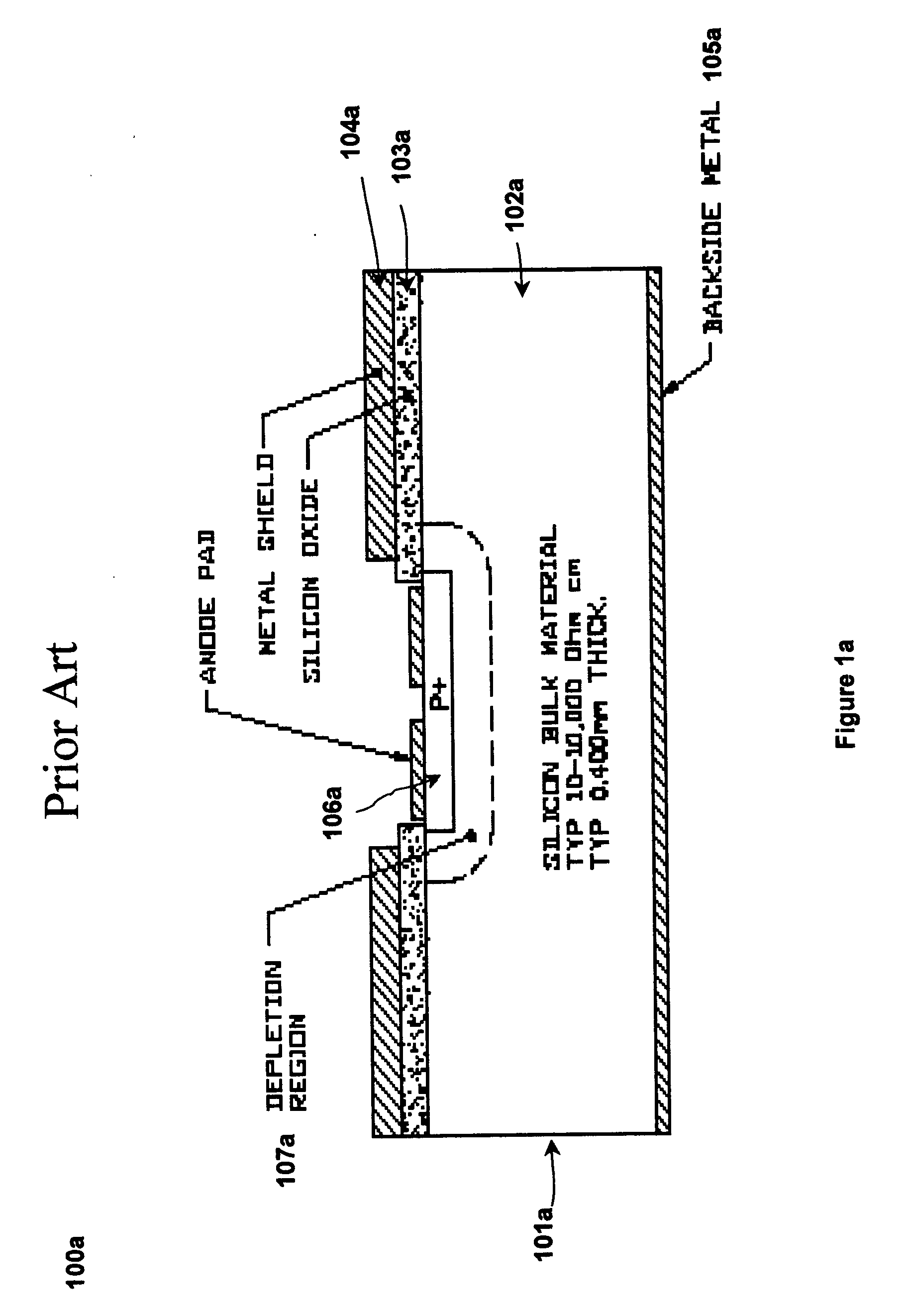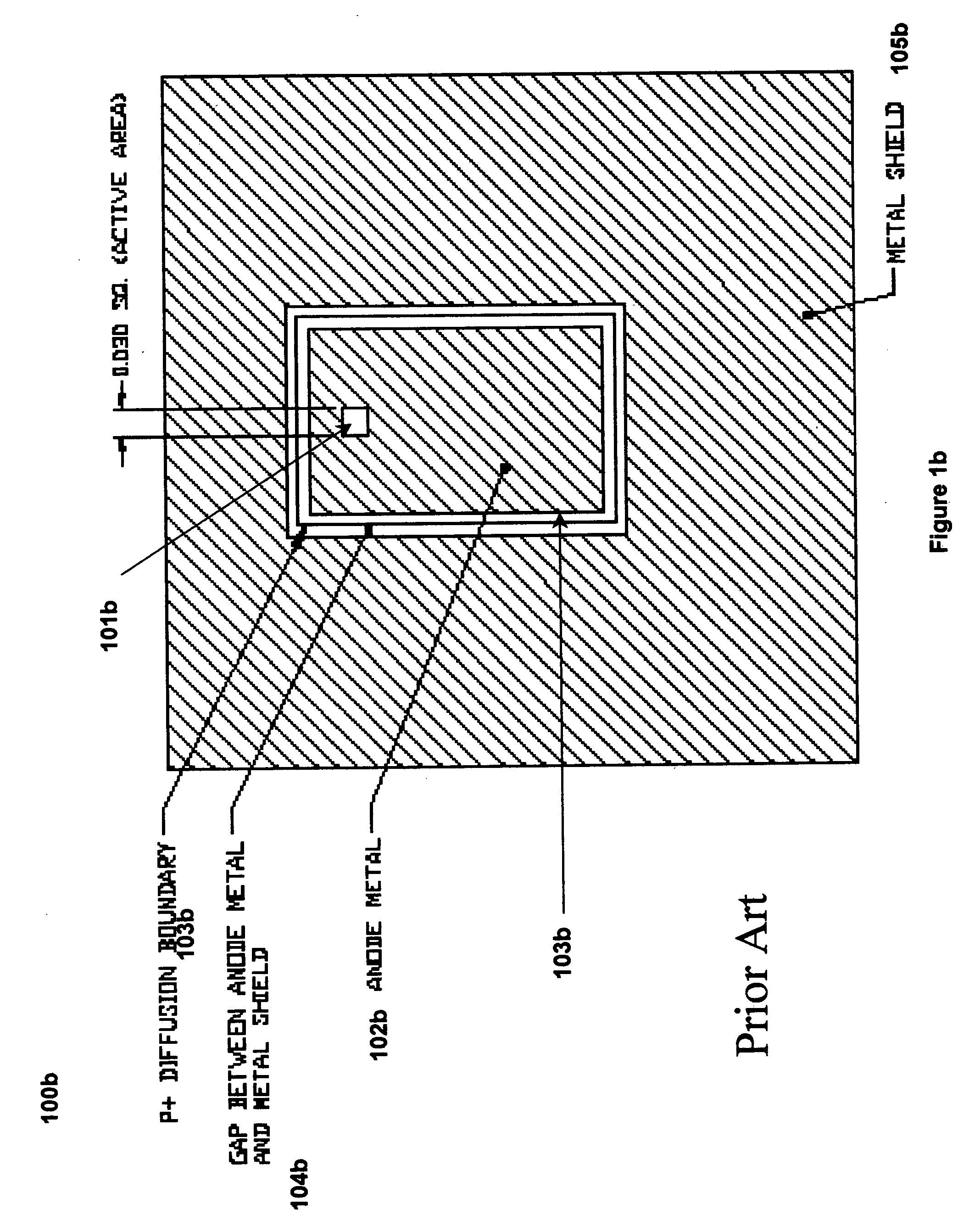Photodiode with controlled current leakage
a photodiode and current leakage technology, applied in the field of radioactive detectors, can solve the problems of many resources associated with the use of conventional photodiodes, waste of capital, time and manpower, leakage current, etc., and achieve the effects of reducing the leakage current of a photodiode, increasing the signal-to-noise ratio and sensitivity, and aggressive and effective techniques for controlling leakage curren
- Summary
- Abstract
- Description
- Claims
- Application Information
AI Technical Summary
Benefits of technology
Problems solved by technology
Method used
Image
Examples
Embodiment Construction
[0038] The present invention is directed towards radiation detectors and methods of detecting incident radiation. In particular the present invention is directed towards photodiodes with controlled current leakage detector structures and a method of manufacturing photodiodes with controlled current leakage detector structures. More specifically, the present invention discloses photodiodes with special structures to substantially reduce detection of stray light. Additionally, the present invention gives special emphasis to design, fabrication, and use of photodiodes with controlled leakage current.
[0039] Various modifications to the preferred embodiment, disclosed herein, will be readily apparent to those of ordinary skill in the art and the disclosure set forth herein may be applicable to other embodiments and applications without departing from the spirit and scope of the present invention and the claims hereto appended. Thus, the present invention is not intended to be limited to...
PUM
 Login to View More
Login to View More Abstract
Description
Claims
Application Information
 Login to View More
Login to View More - R&D
- Intellectual Property
- Life Sciences
- Materials
- Tech Scout
- Unparalleled Data Quality
- Higher Quality Content
- 60% Fewer Hallucinations
Browse by: Latest US Patents, China's latest patents, Technical Efficacy Thesaurus, Application Domain, Technology Topic, Popular Technical Reports.
© 2025 PatSnap. All rights reserved.Legal|Privacy policy|Modern Slavery Act Transparency Statement|Sitemap|About US| Contact US: help@patsnap.com



